Fans of DJI drones will be familiar with the DJI RC series of screen controllers. For this series of RC, lots of people have their evaluations after using them. And of course, more of them are good reviews. After all, compared to ordinary remote controls, the DJI RC series has a much better operating experience. So in this article, let’s take a look at the features and differences of the three screen controllers: DJI RC, DJI RC 2 and DJI RC Pro!

1. Differences in image transmission technology
If the flight control is the brain of the drone, then the image transmission system is the eyes of the drone. Image transmission technology can monitor the captured images in real time during the flight of the drone, thereby better controlling the flight of the drone.
DJI RC is for a drone that supports O3+ image transmission technology, which can achieve 15 kilometers, high-definition and low-latency image transmission, making operation smoother and flying safer. DJI RC can also be loaded with DJI Cellular modules to achieve 4G network communication, bringing a more stable and reliable image transmission connection.
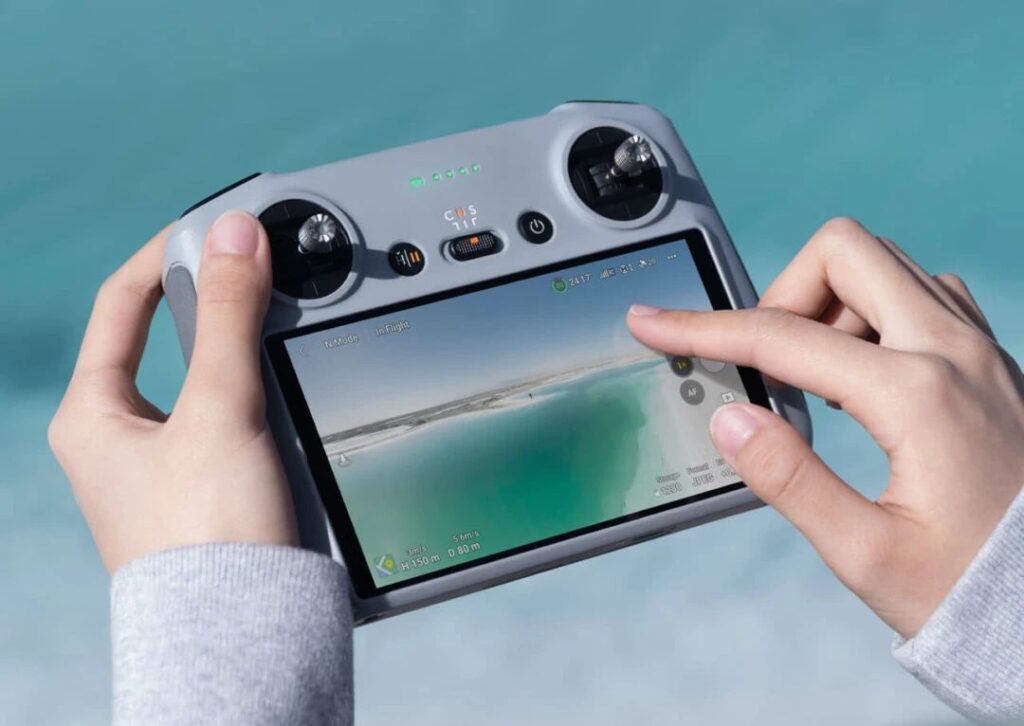
DJI RC Pro also uses O3+ image transmission technology, which can achieve an image transmission distance of 15 kilometers, high definition and low latency. It can also be loaded with DJI Cellular modules to achieve 4G network communication. The same rocker design as the DJI FPV remote control brings a silky smooth control experience.
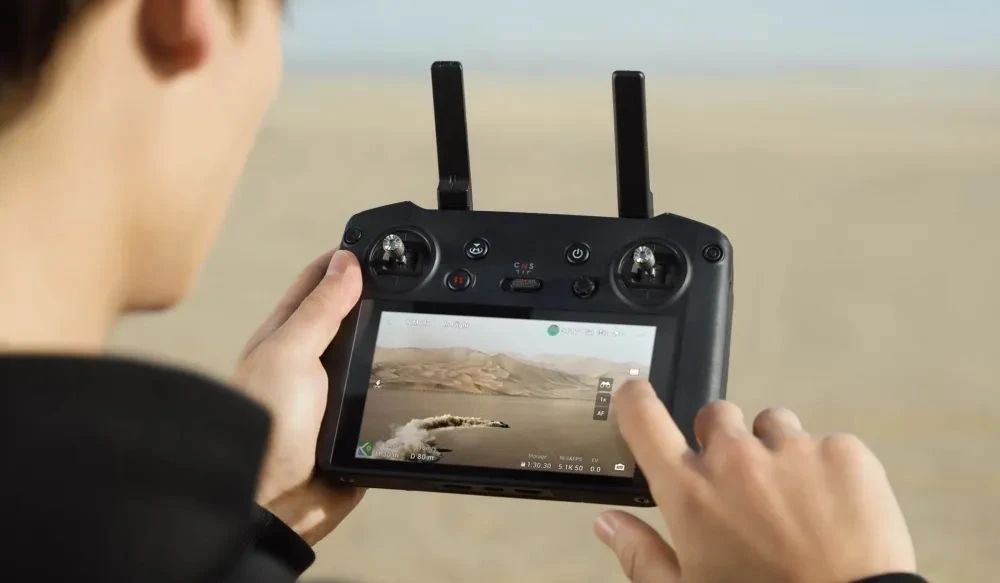
Compared with the previous two generations, the DJI RC 2 has been upgraded to support O4 image transmission technology, which can achieve high-definition and low-latency image transmission up to 20 kilometers. Supporting three frequency bands: 2.4 GHz, 5.1 GHz, and 5.8 GHz, DJI RC 2 has stronger anti-interference capabilities. The O4 image transmission system and two transmitters and four receiver antennas take you quickly into the shooting state, and create with greater ease.
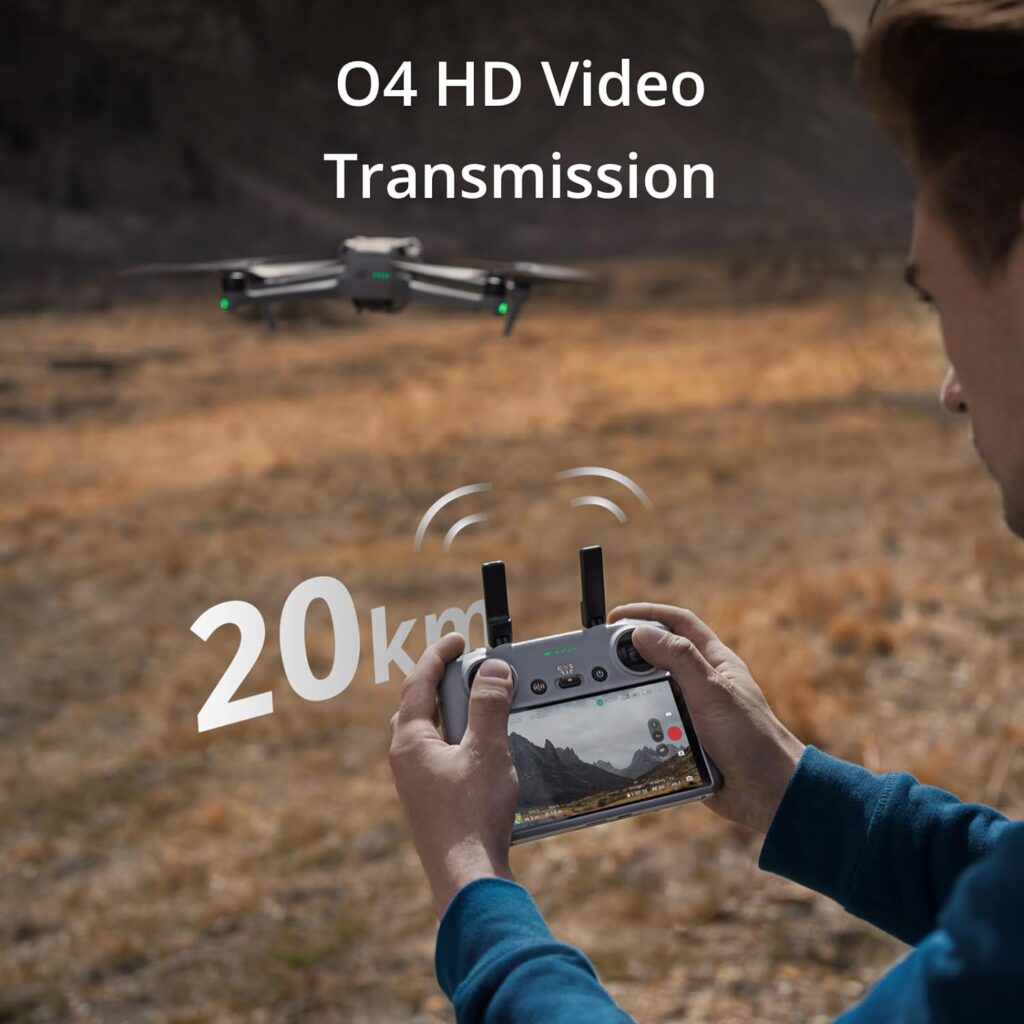
2. Differences in body screens
The design concept of the three remote controls is mainly light and portable. The weight of DJI RC is 390 grams. DJI RC Pro is a little heavier, reaching 680 grams. The DJI RC 2 is somewhere in between, weighing 420 grams.
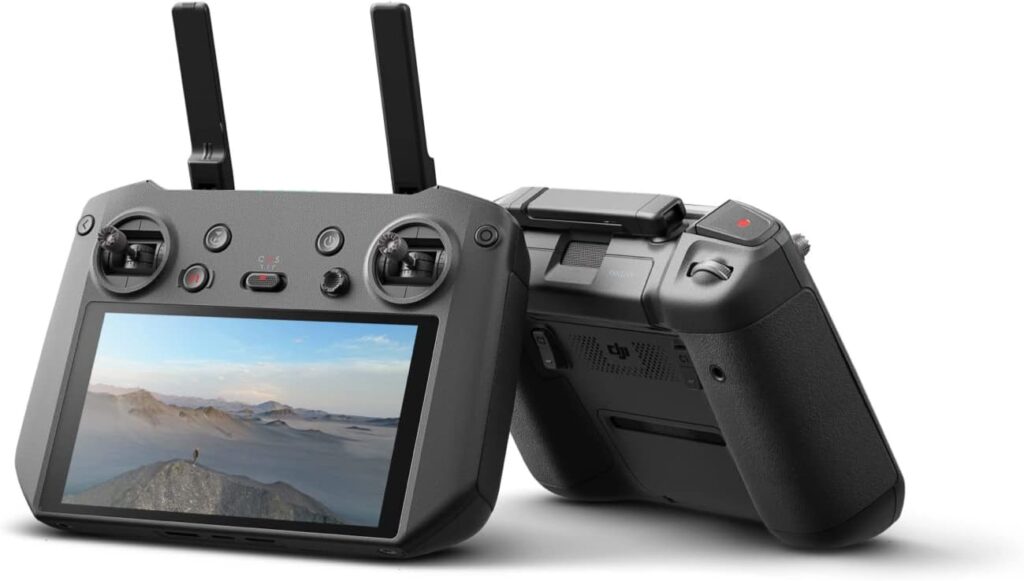
All three controllers come with their own screens, making them more convenient for pilots to control. But there is still a little difference in size and brightness display. DJI RC’s built-in 5.5-inch Full HD screen can continuously display a high brightness of up to 700 nits. DJI RC Pro also has a 5.5-inch full HD screen, but it supports a 1000-nit high-brightness display. DJI RC 2 comes with a 1920×1080 full HD 5.5-inch display that can continuously display at a high brightness of 700 nits.
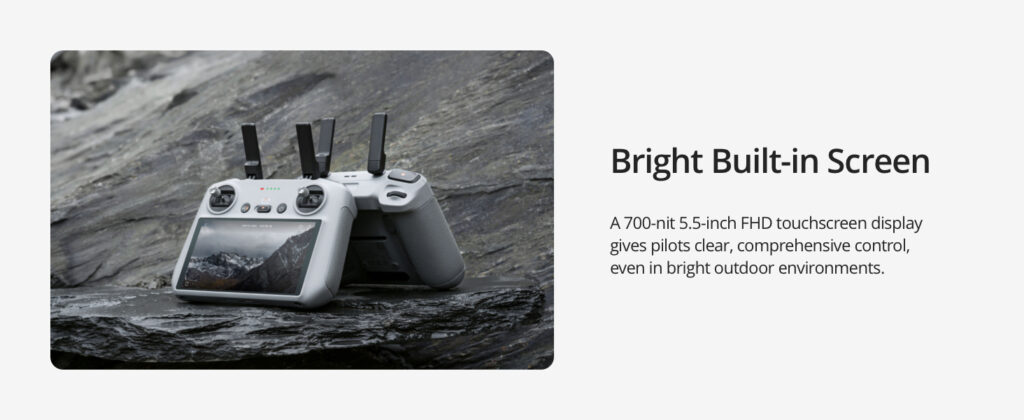
3. Differences in processor performance
In terms of processor performance, it can be said that the DJI RC series has been updated every generation, ensuring the continuous upgrading of the operating system and improving the user experience.
DJI RC is more compact and flexible, weighing only 390g. And the advantage of the screen monitor is that you don’t need to connect your phone after startup, helping you quickly get into shooting mode.
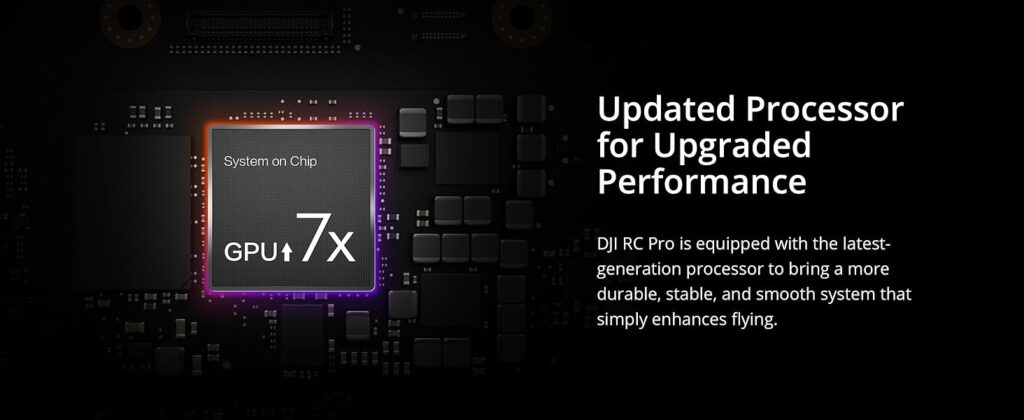
DJI RC Pro is equipped with a new generation processor with stronger performance and lower power consumption. The CPU performance is increased to 4 times, the GPU performance is increased to 7 times, and the power consumption is reduced by 20% compared with the previous generation, ensuring that the system runs longer, more stable and smoother.
DJI RC 2 benefits from a new generation of processors with improved CPU and GPU performance. The system and apps run more smoothly, providing a more comfortable control experience. What is worth sighing about is that the Android-based remote control can not only fly drones, but also download software to play games and watch videos.
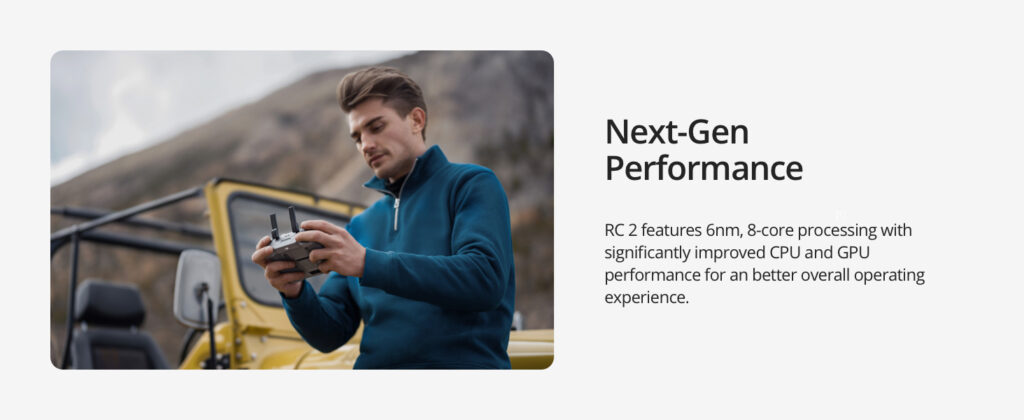
4. Differences in operating levers
The design of the hand lever is a direct reflection of the user’s usability. DJI RC is equipped with a new double tension spring rocker, which provides a more delicate control feel and higher precision, helping you complete various types of flight control more accurately.
DJI RC Pro uses the same joystick as DJI FPV, with precise operation and delicate feel, helping you to compose precise shots. You can quickly connect to the aircraft when you turn on the power, enter shooting mode immediately, and record wonderful moments at any time.
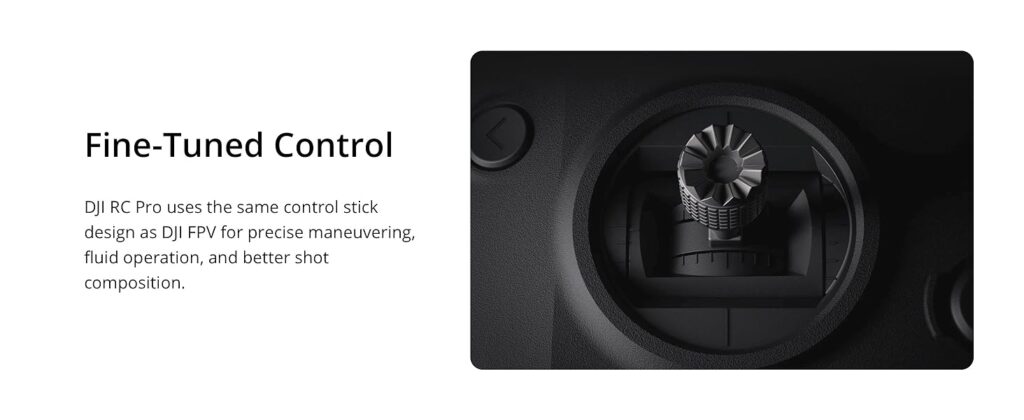
The joystick configuration of the previous generation of DJI RC 2 is basically the same, and coupled with its lightweight body, you can easily hold it and control it freely even if you work for a long time.
5. The difference between storage and interface
DJI RC has multiple common interfaces on the body to facilitate users to charge, add microSD cards, or install DJI Cellular modules.
DJI RC Pro comes with 32GB of onboard memory, which can be used for screen recording and caching, and a microSD memory card can be plugged in to expand storage space. It is also equipped with mini-HDMI, a full-featured USB-C interface and a microSD card port, which can charge, store and output images. It also supports third-party APPs.
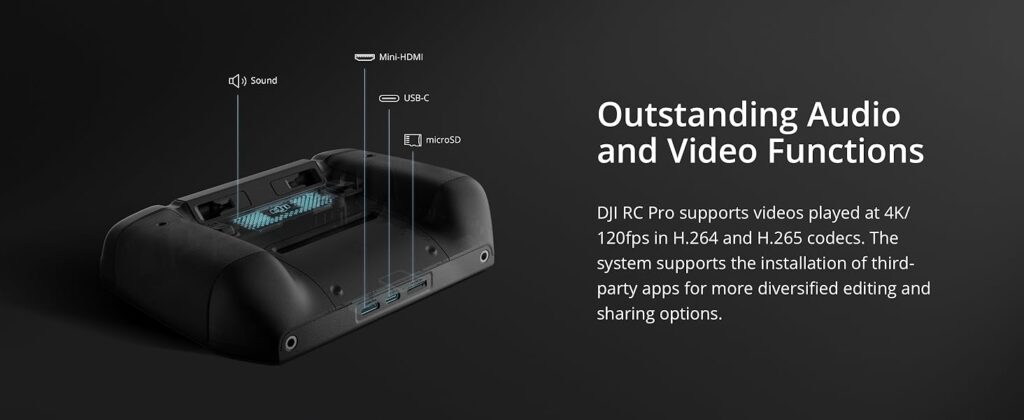
The DJI RC 2 also comes with 32GB of onboard memory, which can be used for screen recording and caching, and a microSD memory card can be plugged in to expand storage space.
6. DJI drone models compatible with RC
Drone models compatible with DJI RC: DJI Mavic 3 Pro, DJI Mavic 3 Pro Cine, DJI Mavic 3 Classic, DJI Mavic 3, DJI Mavic 3 Cine, DJI Mini 3 Pro, DJI Mini 3, DJI Air 2S.
Drone models compatible with DJI RC Pro: DJI Mavic 3 Pro, DJI Mavic 3 Pro Cine, DJI Mavic 3 Classic, DJI Mavic 3, DJI Mavic 3 Cine, DJI Mini 3 Pro, DJI Air 2S.
Drone models compatible with DJI RC 2: DJI Air 3, DJI Mini 4 series.
Please refer to the official DJI website for further updates.
DJI RC vs RC 2 vs RC Pro Comparison Table
Model | DJI RC | DJI RC 2 | DJI RC Pro |
Image | |||
Pros |
|
|
|
Cons |
|
|
|
Final Thoughts
In overall comparison, the controller functions of the DJI RC series are not much different, and the operation methods are basically the same. But in terms of price, DJI RC has the highest cost performance and is compatible with many models. DJI RC Pro has the highest price due to upgrades in processor, handgrip, etc. If you want to pursue a new model with high definition and long battery life, you can choose DJI RC 2. But in fact, no matter which product it is, from the first-generation screen-less remote control to today’s models with built-in screens, every update of DJI’s products is to allow users to enter the shooting state more quickly and create with more ease.
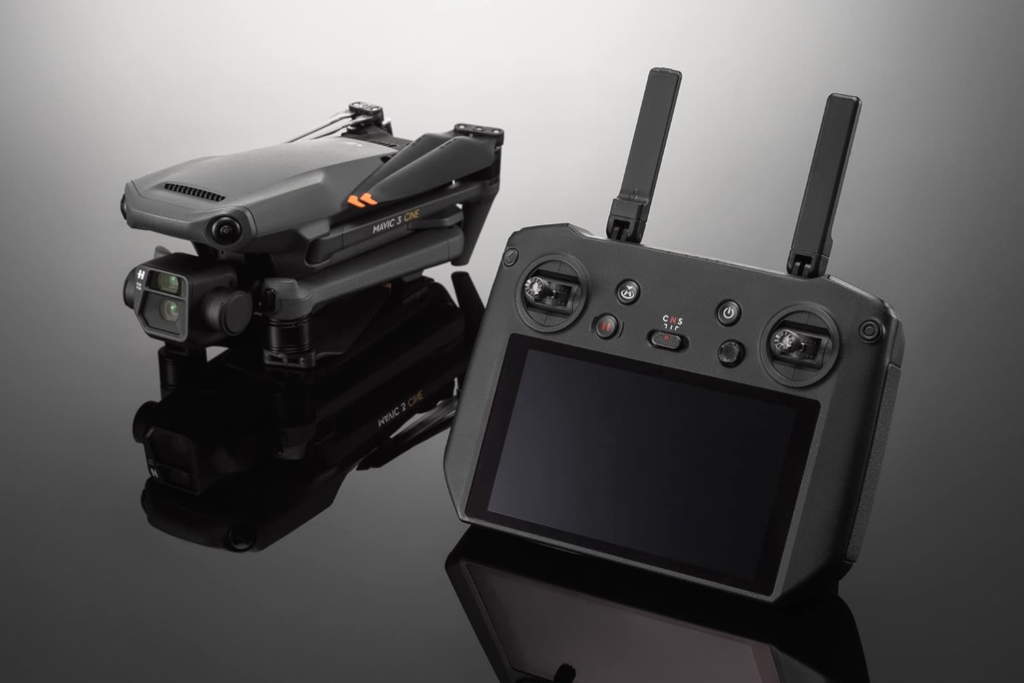
FAQs about DJI RC
1. What is the function of the two USB-C ports of DJI RC?
The USB-C port on the right is the charging port, and the USB-C port on the left can be used for other accessories such as USB-C earphones or a mic.
2. Does DJI RC have a speaker and microphone?
DJI RC has a built-in speaker but no microphone.
3. Does DJI RC have customizable buttons?
Yes. The C1/C2 button can be customized in the DJI Fly app for more convenient control of the drone.
4. Can I install third-party apps on DJI RC?
No.
5. What is the operating time of DJI RC?
Up to four hours under normal operating conditions.
6. How can I adjust the antennas of DJI RC?
DJI RC adopts built-in antennas. When using it, you only need to point the top of the device toward the direction of the drone.
FAQs about DJI RC Pro
1. Compared with the DJI Smart Controller, what major upgrades does DJI RC Pro have?
Featuring a next-generation processor, DJI RC Pro is the newest high-performance remote controller platform with a built-in screen. Compared with the DJI Smart Controller, the performance of the CPU and GPU of DJI RC Pro is increased by 4 times and 7 times respectively, with boosted system performance and lower power consumption, offering longer use duration and a smoother control experience. DJI RC Pro also features a comprehensively improved transmission system. It supports the brand-new O3+ transmission with a live streaming at up to 1080p/60fps and a max transmission range of 15 km. In addition, DJI RC Pro adopts the same control sticks of DJI FPV for more precise, responsive, and smooth operation.
2. What are the differences between the ultra-bright display of DJI RC Pro and a normal display?
DJI RC Pro provides brightness up to 1000 nits, showing clear details even under direct sunlight, making it an optimal tool for outdoor use. Normal phone screens, however, cannot provide a constant high level of brightness and will automatically decrease brightness in an outdoor environment.
3. Does DJI RC Pro support quick charging?
Yes, it supports mainstream quick-charging solutions. It takes 2 hours to fully charge DJI RC Pro with a 12V charger, and 1.5 hours with a 15V charger.
4. What is the operating time of DJI RC Pro?
3 hours or longer under normal operating conditions.
5. Does DJI RC Pro have a speaker and microphone?
DJI RC Pro has a built-in speaker, but does not have microphone. For phone calls and recording, it supports an external microphone through the USB Type-C port.
Enjoyed this DJI RC vs RC 2 vs RC Pro indepth review? Then be sure to check out our other RC guides.


